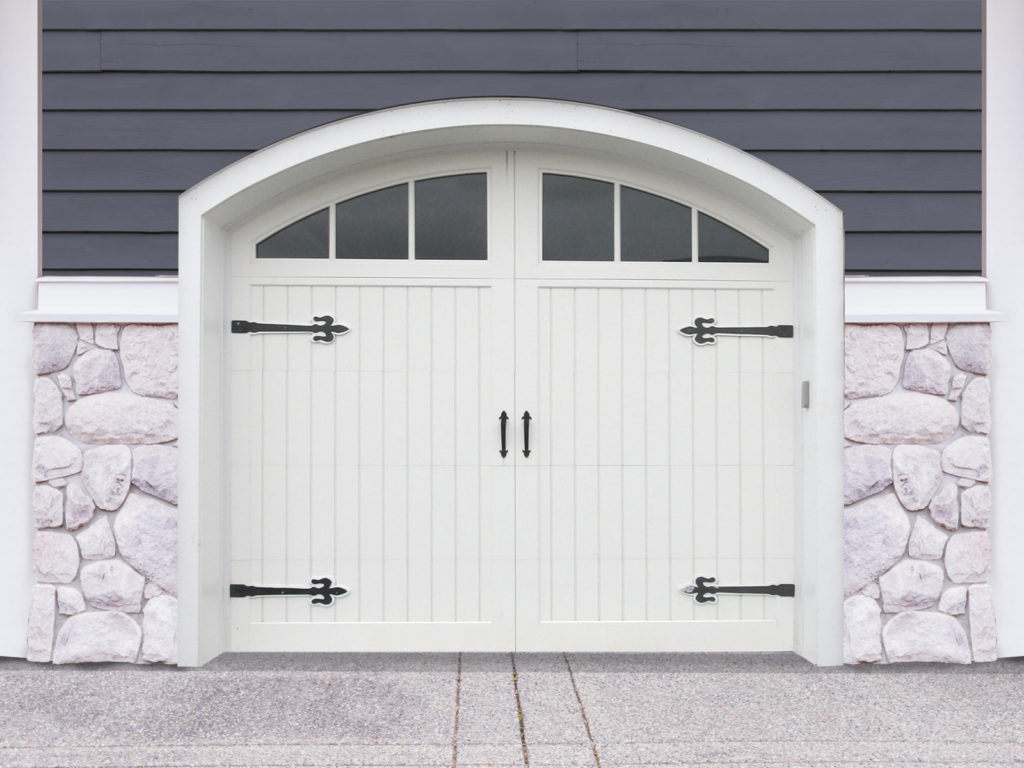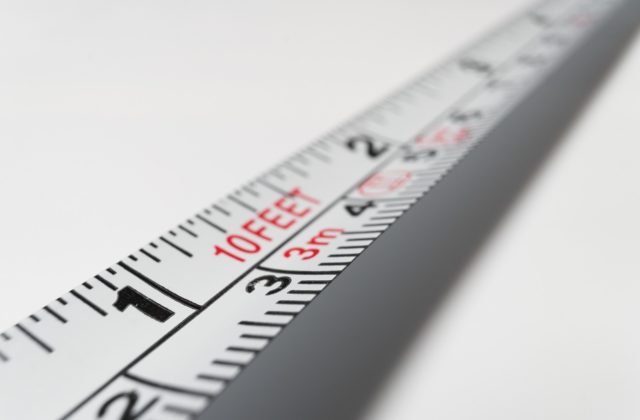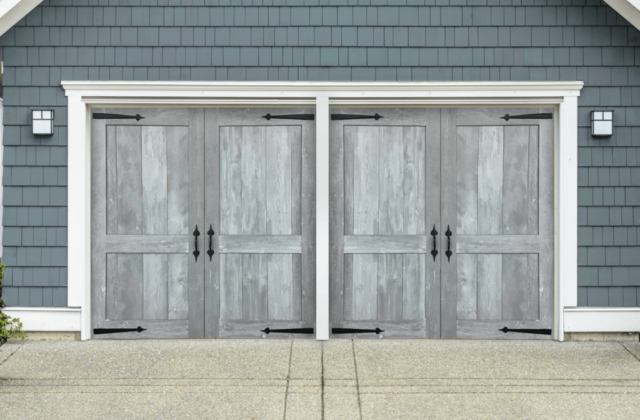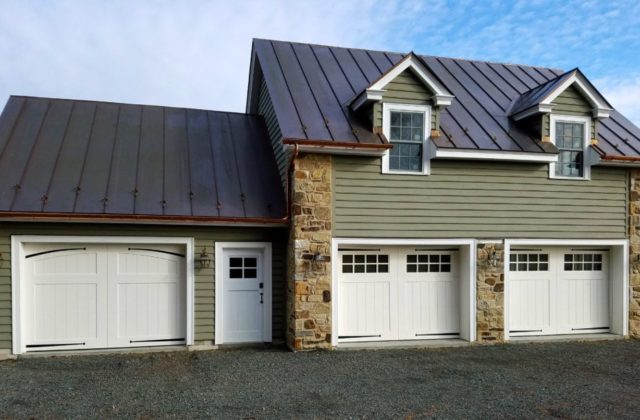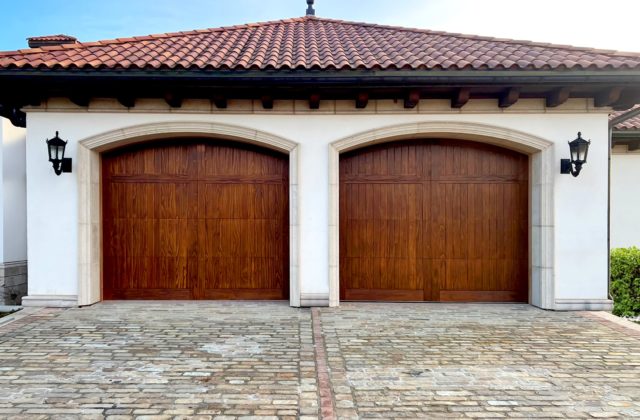You can help extend your garage door’s lifespan by working through our maintenance checklist. However, from time to time, things happen and repairs are needed. When that time comes, it’s important to know whether it can be a DIY garage door repair, or if you should call the professionals.
Knowing what is needed for your garage door and your experience will extend your door’s lifespan and prevent further damage.
#1. Decorative Hardware
Decorative hardware is a small but effective way to spruce up your existing garage door. Once you find the right design for you, you can follow these steps to install it. You can choose from a couple of different garage door hardware parts, which will depend on your style and preferences.
If you already have decorative hardware on your door, but it’s starting to fall off or rust, it’s time for some repairs. As a regular maintenance check, you should tighten your hardware to reduce the risk of it falling off.
Tools you’ll need for a garage door hardware replacement include a:
- Tape Measure
- Level
- Pencil
- Drill
Set up your hardware where you want it, and mark each drill hole with a pencil. You can use a level to ensure that you’re marking your hardware correctly and it’s straightened on the door.
Once everything is marked with a pencil, you can drill your holes and install your decorative hardware. So, good news, garage door hardware repair or replacement is a do-it-yourself project!
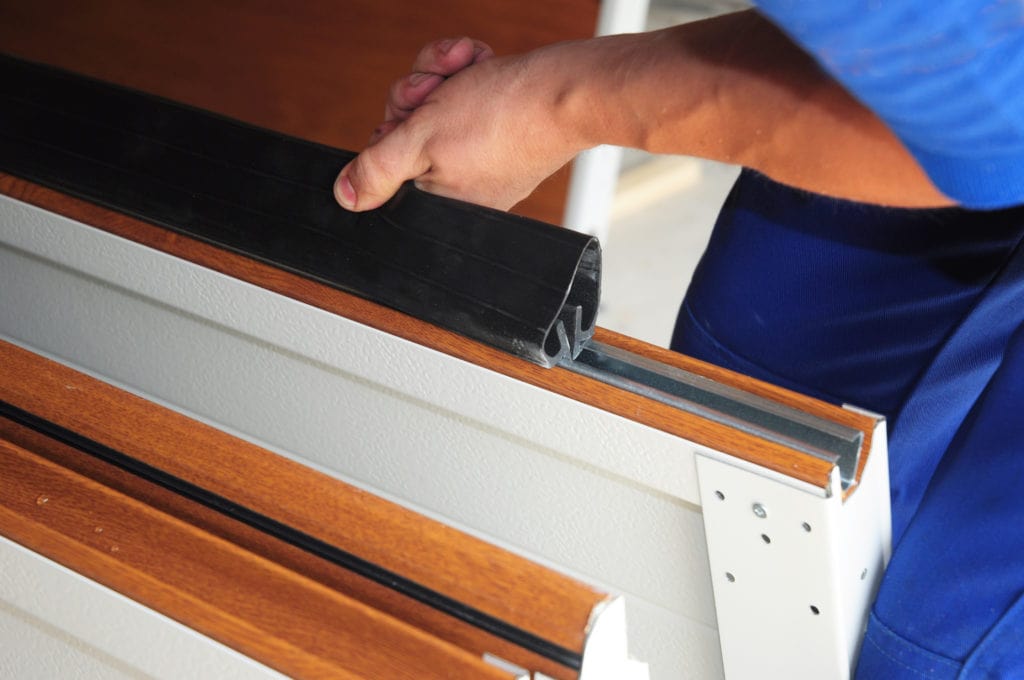
#2. Weather Stripping or Seals
Now we’ll move on to how to fix garage door weather stripping. These common repairs will likely need to happen the longer you have your garage door. When this time comes, it’s important you have the right information and tools for a repair or replacement.
Added weather stripping can also be an extra support for your garage during the colder months. New weather stripping helps keep heat within your garage, and cold air outside.
Some indications that your weather stripping should be replaced are:
- You’ve noticed a change in temperature in your garage, your thermostat is showing one temperature but it feels warmer or colder.
- Water is starting to leak into your garage through the bottom of your door.
- The light shines through the edges of your garage door.
- You see visible cracks or warping.
- Your weather stripping is stiff and brittle, rather than flexible.
If you find yourself needing to replace the bottom seal of your garage door, you can buy the necessary materials to do this project yourself. Once you have everything prepared, you‘ll start by removing the old weather stripping.
Once the original weather stripping is off your garage door, this is also a great time to clean the track. Dirt and debris have likely built up over time, and by cleaning the track you can expand the lifespan of the new weather stripping.
To put the new seal on, use dish soap to lubricate the material so it can easily slide across the bottom of your garage door.
There are a few different types of garage door weather stripping. If your garage has weather stripping that’s nailed to the door, you’ll have to take different steps to replace it. However, no matter what type of weather stripping or seals you have, this is a project you can do yourself.
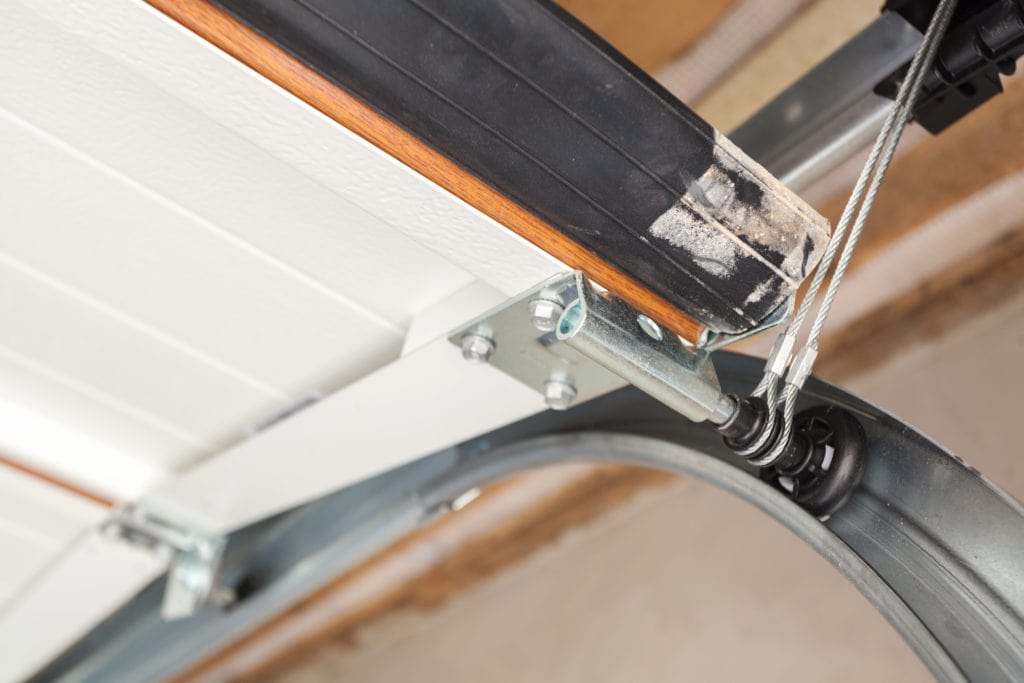
#3. Garage Door Track
Different parts of your garage door track may be causing a problem for your entire door. By knowing what type of track you have, you’ll be better able to assess the issue and find a solution.
To extend your garage door track’s lifespan, we recommend lubricating the tracks at least twice a year. Before you lubricate the tracks, check the rollers and hinges, and inspect the opener chain.
Also, it’s important to use the right degreaser on your garage door. You should use a silicone spray or white lithium grease, rather than standard degreasers like WD-40®.
If you’re noticing any of the following, it could mean it’s time to repair your garage door track.
- The door doesn’t close fully or smoothly.
- There is more noise when your door is operating.
- Your garage door is sagging or warping.
- The door hesitates to open or is slow to open.
- You notice rust or corrosion on your door track.
Installing garage door tracks yourself can be complicated and labor-intensive. Depending on your experience, this can be a DIY garage door repair. However, for best results, we recommend bringing in a professional.
#4. Garage Door Sensors
One of the reasons your garage door may not open and close properly is that there’s something wrong with your garage door sensors. If the sensors aren’t able to properly reach each other, this causes your garage door to stay open or jolt when you’re trying to open or close it.
Fixing garage door sensors should be a top priority. These sensors are put in place to protect anything from being crushed by your garage door. If something’s in the path or underneath your garage door, the sensors know not to close it.
Sensors work with something called a photo-eye and detect any time something is in the line of sight. A good indication that repairs or replacements are required is if your door isn’t closing but there isn’t anything in its way.
Before completely replacing your garage door sensors, try cleaning off and re-aligning the sensors to see if dirt and debris build-up has caused the photo-eyes not to be able to connect. If you are still seeing malfunctions, the sensors likely need to be replaced.
Luckily, garage door sensors are another DIY garage door repair. You can find a new pair of sensors at your local home improvement store or online.
#5. Garage Door Springs
Garage door springs are crucial to the operation of your garage door. If you’re asking yourself, can I replace garage door springs myself, the answer is no. These springs are heavy in tension and if they are released, it can cause property damage or bodily injury.
If there’s something wrong with your garage door springs, you’ll probably hear more noise when your garage door operates, or the door will close too fast. These indications should be addressed almost immediately because your springs help control your door so it doesn’t fall on something or someone.
Also, even if only one spring is not operating properly, it should be a main priority to fix. Although a garage door can operate with only one spring, it causes a lot of wear and tear on the entire door.
#6. Automatic Openers
There are a lot of different reasons as to why your garage door isn’t functioning properly or not opening smoothly. We’ve gone through a lot of mechanical reasons but one possibility is that your garage door opener isn’t working.
Luckily, fixing your automatic opener is an easy DIY garage door repair. By making this repair, you not only make things more convenient for you but also increase the safety of your home.
Without a proper garage door opener, it’s easier for someone to open your garage and get into your home. In fact, 9% of burglaries happen through your garage door.
To do this replacement yourself, you’ll follow the manual that comes with your new garage door opener. You can test it by putting it on a ladder at the right height and opening the door from the outside.
Then, once you know it’s working properly, you can mount the opener on the header bracket. This process is easiest with your garage door open.
How to Prevent Garage Door-Related Accidents
While garage doors and DIY garage door repairs can be dangerous, there are a number of things you can do to reduce the chances of property damage or injury.
These include:
- Testing the door’s safety sensors regularly with an inanimate object.
- Monitor your door’s balance by disconnecting the opener and lifting it halfway by hand.
- Protecting children by using keypads and keeping any opener remotes out of reach.
- Ensuring the bolts holding the door to the building are tight.
- Make sure the door’s emergency release is closed at hand for emergencies.
This blog was originally published on June 30th, 2020, and was updated on November 29th, 2023.
